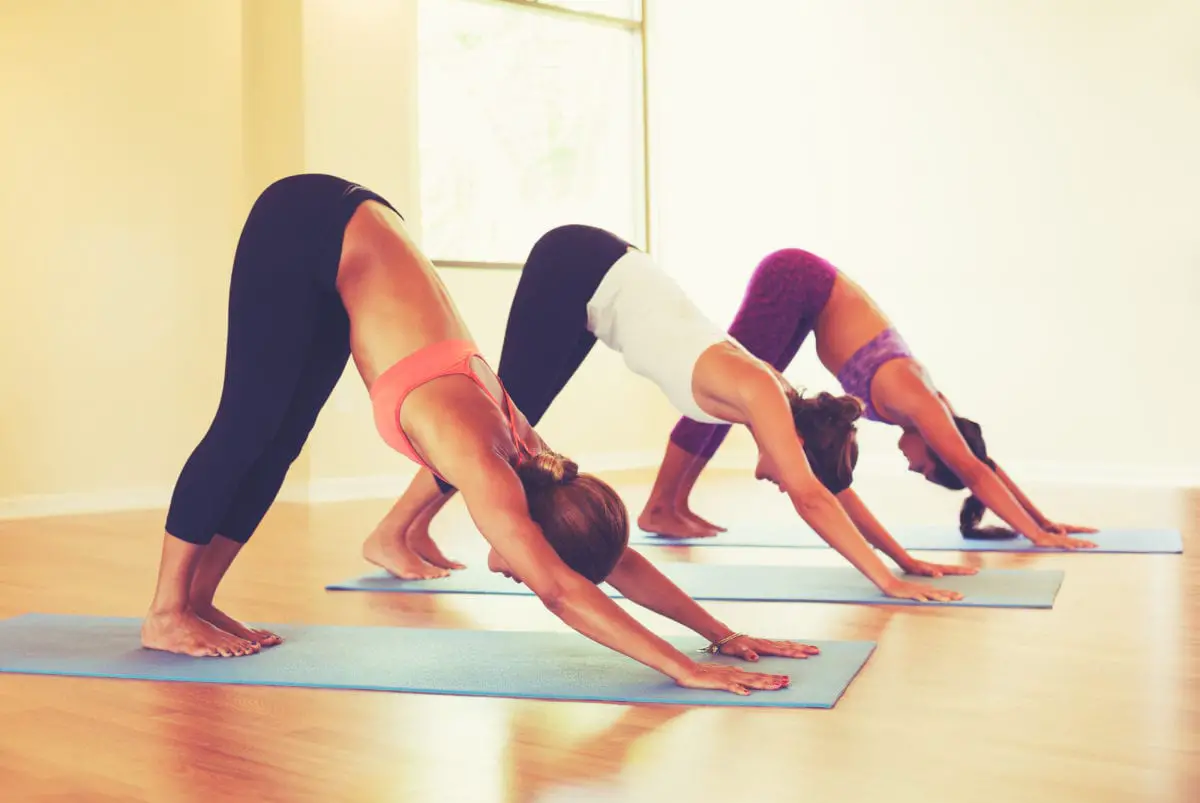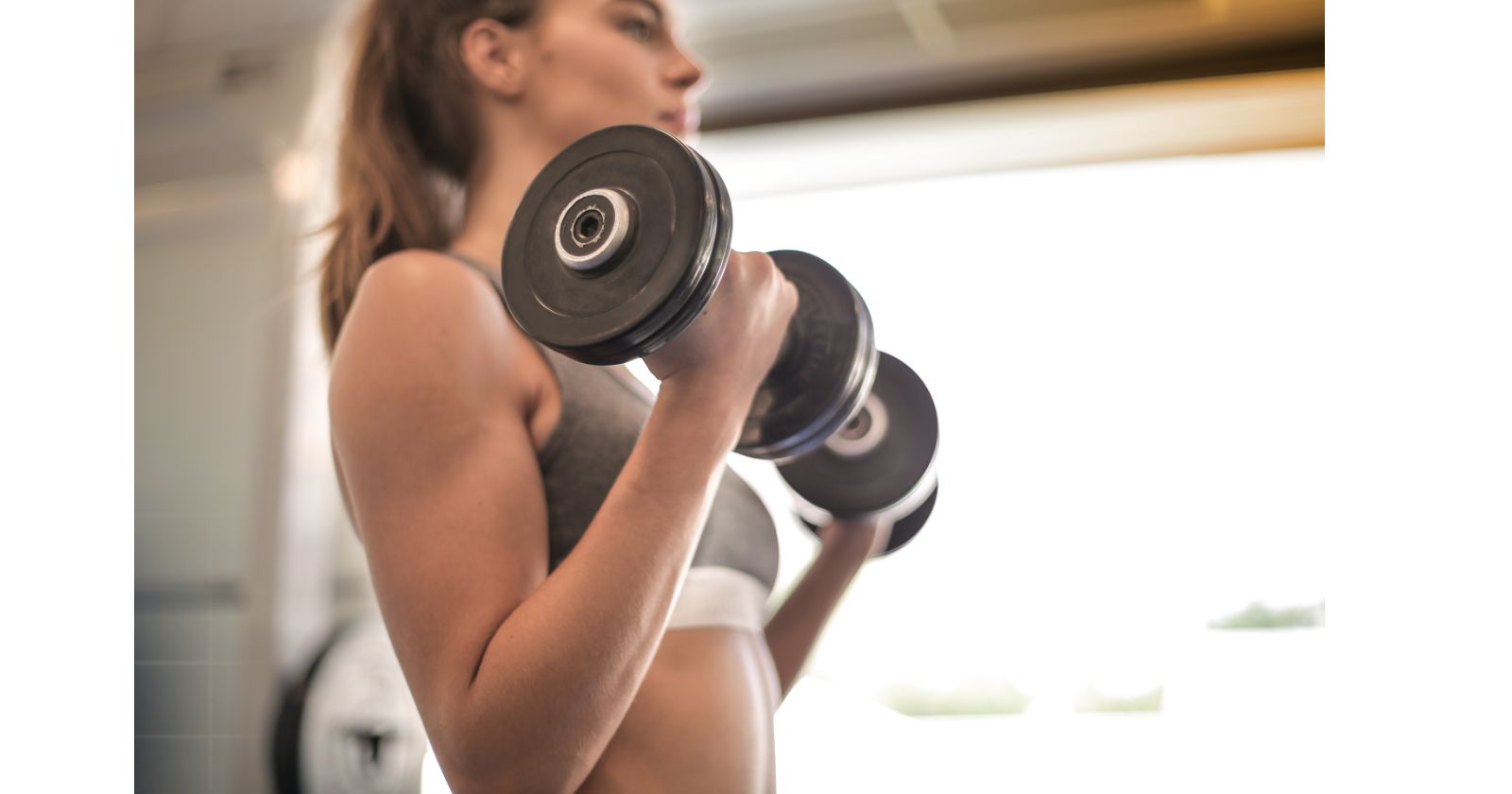If you’re interested in fitness, you may have heard of the 4 Types of Fitness. These four types of fitness are important for maintaining a healthy body and mind. Understanding the different types of fitness can help you incorporate them into your workout routine.
The four types of fitness are aerobic, muscle-strengthening, bone-strengthening, and stretching. Each type of fitness targets different areas of the body and has unique benefits. Aerobic exercise, for example, is great for improving your cardiovascular health and endurance. Muscle-strengthening exercises, on the other hand, can help you build and maintain muscle mass. Bone-strengthening exercises can help prevent osteoporosis, and stretching can improve your flexibility and range of motion.

Key Takeaways
- There are four types of fitness: aerobic, muscle-strengthening, bone-strengthening, and stretching.
- Each type of fitness has unique benefits for your body and mind.
- Incorporating all four types of fitness into your routine can help you maintain a healthy body and mind.
Understanding Fitness
Fitness is a state of physical and mental well-being that allows you to perform daily activities without undue fatigue. It is a combination of different factors, including endurance, strength, balance, and flexibility. Each type of fitness plays a vital role in keeping your body healthy and functioning correctly.

Endurance
Endurance is the ability of your body to sustain physical activity for an extended period. It is also known as cardiovascular fitness and involves activities that increase your heart rate and breathing rate, such as running, cycling, or swimming. Endurance exercises improve your heart and lung health, reduce the risk of chronic diseases, and boost your energy levels.
Strength
Strength is the ability of your muscles to produce force against resistance. It is also known as muscular fitness and involves activities that use resistance, such as weightlifting or bodyweight exercises. Strength exercises improve your muscle mass, bone density, and metabolism, which helps you burn more calories and maintain a healthy weight.
Balance
Balance is the ability of your body to maintain stability and control during movement. It is essential for daily activities such as walking, standing, and climbing stairs. Balance exercises involve activities that challenge your body’s stability, such as yoga, tai chi, or balance boards. Balance exercises improve your coordination, reduce the risk of falls, and enhance your overall physical performance.
Flexibility
Flexibility is the ability of your joints to move through their full range of motion. It is also known as stretching and involves activities that increase your muscle and joint flexibility, such as static stretching or yoga. Flexibility exercises improve your posture, reduce the risk of injury, and enhance your physical performance.
In summary, fitness is a combination of four types of exercises: endurance, strength, balance, and flexibility. Each type of fitness has different benefits and plays a crucial role in keeping your body healthy and functioning correctly. By incorporating all four types of exercises into your routine, you can improve your physical and mental well-being and enjoy a better quality of life.
The 4 Types of Fitness
When it comes to fitness, there are four main types that you should focus on: Cardiorespiratory Fitness, Muscular Strength, Muscular Endurance, and Flexibility. Each type of fitness has its own unique benefits and plays an important role in overall health and fitness.
Cardiorespiratory Fitness
Cardiorespiratory fitness, also known as aerobic fitness, refers to the ability of your heart and lungs to supply oxygen to your muscles during physical activity. This type of fitness is important for maintaining a healthy heart and reducing the risk of cardiovascular disease. Examples of exercises that improve cardiorespiratory fitness include running, cycling, swimming, and brisk walking.
Muscular Strength
Muscular strength refers to the amount of force your muscles can produce in a single effort. This type of fitness is important for performing everyday tasks such as lifting heavy objects and maintaining good posture. Resistance training exercises such as weightlifting, push-ups, and squats are great for improving muscular strength.
Muscular Endurance
Muscular endurance refers to the ability of your muscles to perform repetitive contractions over an extended period of time. This type of fitness is important for activities such as running, cycling, and swimming. Endurance training exercises such as running long distances, cycling for extended periods, and high-repetition resistance training are great for improving muscular endurance.
Flexibility
Flexibility refers to the range of motion in your joints and muscles. This type of fitness is important for preventing injuries and improving posture. Stretching exercises such as yoga, Pilates, and static stretching are great for improving flexibility.

Incorporating all four types of fitness into your workout routine can help you achieve a well-rounded level of fitness and improve your overall health. Remember to consult with a healthcare professional before starting any new exercise program.
Importance of Each Fitness Type
When it comes to physical fitness, there are four types of exercise that you should focus on: cardiorespiratory fitness, muscular strength, muscular endurance, and flexibility. Each type of fitness is important for your overall health and well-being, and incorporating all four into your fitness routine can help you achieve your fitness goals.
Benefits of Cardiorespiratory Fitness
Cardiorespiratory fitness, also known as aerobic fitness, refers to the ability of your heart, lungs, and blood vessels to deliver oxygen to your muscles during exercise. This type of exercise includes activities such as running, cycling, and swimming.
Cardiorespiratory fitness is important because it improves your overall health and reduces your risk of chronic diseases such as heart disease, diabetes, and obesity. It also helps to increase your endurance and stamina, making it easier to perform everyday activities such as climbing stairs or carrying groceries.
Role of Muscular Strength
Muscular strength refers to the amount of force your muscles can produce in a single effort. This type of exercise includes activities such as weight lifting and resistance training.
Muscular strength is important because it helps to build and maintain muscle mass, which can help to increase your metabolism and burn more calories throughout the day. It also helps to improve your posture and balance, reducing your risk of falls and injuries.
Significance of Muscular Endurance
Muscular endurance refers to the ability of your muscles to perform repetitive movements over a period of time. This type of exercise includes activities such as running, cycling, and swimming.
Muscular endurance is important because it helps to increase your stamina and endurance, making it easier to perform everyday activities such as walking or carrying groceries. It also helps to reduce your risk of injuries by improving your muscle strength and flexibility.
Value of Flexibility
Flexibility refers to the range of motion in your joints and muscles. This type of exercise includes activities such as stretching and yoga.
Flexibility is important because it helps to improve your posture, reduce your risk of injuries, and increase your range of motion. It also helps to reduce muscle tension and soreness, making it easier to recover from workouts and perform everyday activities.
Incorporating all four types of fitness into your fitness routine is important for achieving your fitness goals and maintaining your overall health and well-being. By focusing on cardiorespiratory fitness, muscular strength, muscular endurance, and flexibility, you can improve your physical fitness and lead a healthier, more active lifestyle.
Fitness Assessments
Before you start any fitness program, it’s important to assess your current fitness level. Fitness assessments can help you create a personalized workout plan that is tailored to your strengths and weaknesses. The four main types of fitness assessments include body composition, cardiorespiratory fitness, muscular strength, muscular endurance, and flexibility.
Testing Cardiorespiratory Fitness
Cardiorespiratory fitness is a measure of your body’s ability to take in, transport, and use oxygen during exercise. One way to test your cardiorespiratory fitness is by performing a VO2 max test. This test measures the maximum amount of oxygen your body can use during exercise. Another way to test your cardiorespiratory fitness is by performing a submaximal exercise test. This test involves exercising at a steady pace for a set amount of time while your heart rate is monitored.
Measuring Muscular Strength
Muscular strength is the amount of force your muscles can produce in a single effort. One way to measure muscular strength is by performing a one-rep max test. This test involves lifting the heaviest weight you can lift for one repetition. Another way to measure muscular strength is by performing a grip strength test. This test measures the force you can generate with your hands.

Evaluating Muscular Endurance
Muscular endurance is the ability of your muscles to perform repetitive contractions over a period of time. One way to evaluate muscular endurance is by performing a push-up test. This test involves performing as many push-ups as possible in a set amount of time. Another way to evaluate muscular endurance is by performing a plank test. This test involves holding a plank position for as long as possible.
Assessing Flexibility
Flexibility is the range of motion in your joints. One way to assess flexibility is by performing a sit-and-reach test. This test involves sitting on the floor with your legs straight out in front of you and reaching forward as far as you can. Another way to assess flexibility is by performing a shoulder flexibility test. This test involves reaching behind your back with one arm and over your shoulder with the other arm to touch your fingers together.
By performing these fitness assessments, you can identify areas where you need to improve and create a workout plan that is tailored to your needs. Remember, it’s important to consult with a healthcare professional before starting any new exercise program.
Exercise Examples
Now that you know what the four types of fitness are, it’s time to start incorporating them into your exercise routine. Here are some examples of exercises that fall into each category:
Aerobic Exercise
- Running
- Cycling
- Swimming
- Dancing
- Jumping rope
Strength Exercise
- Weightlifting
- Push-ups
- Squats
- Lunges
- Planks
Balance Exercise
- Yoga
- Tai Chi
- Single-leg stance
- Heel-to-toe walk
- Standing on a balance board
Flexibility Exercise
- Stretching
- Yoga
- Pilates
- Foam rolling
- Dynamic stretching
Remember, it’s important to include all four types of exercise in your routine for optimal health and fitness. You can mix and match exercises from each category to create a well-rounded workout. Additionally, be sure to consult with a healthcare professional before starting any new exercise program.
Conclusion
Now that you know the four types of fitness, you can plan your workouts accordingly to achieve your fitness goals. Remember that each type of fitness has its own benefits, and incorporating all four types into your workout routine can help you achieve a well-rounded level of fitness.
Endurance exercises will help you improve your cardiovascular health, increase your endurance, and burn calories. Strength training will help you build muscle, increase bone density, and improve your overall strength and balance. Balance exercises can help you improve your stability and prevent falls, while flexibility exercises can help you increase your range of motion and prevent injury.
It’s important to keep in mind that not every workout needs to include all four types of fitness. You can focus on one or two types of fitness in each workout and rotate through them throughout the week. You can also mix and match different exercises to keep things interesting and prevent boredom.
Remember to always listen to your body and adjust your workouts as needed. If you’re new to exercise, start slow and gradually increase the intensity and duration of your workouts. And if you have any medical conditions or injuries, consult with your doctor or a certified fitness professional before starting a new exercise program.
By incorporating all four types of fitness into your workout routine and listening to your body, you can achieve a well-rounded level of fitness and improve your overall health and well-being.
Frequently Asked Questions
What are the 4 levels of fitness and how do they differ?
The four levels of fitness are sedentary, beginner, intermediate, and advanced. Sedentary individuals have little to no physical activity in their daily routine, while beginners are just starting to exercise. Intermediate individuals have been exercising regularly for a few months, and advanced individuals have been exercising for years and have reached a high level of fitness. Each level differs in terms of fitness goals, intensity of workouts, and types of exercises.
What are the 4 pillars of physical fitness and how do they contribute to overall health?
The four pillars of physical fitness are cardiovascular endurance, muscular strength, muscular endurance, and flexibility. Cardiovascular endurance is the ability of the heart and lungs to supply oxygen to the muscles during exercise. Muscular strength is the amount of force a muscle can produce in a single effort. Muscular endurance is the ability of a muscle or group of muscles to sustain repeated contractions against a resistance for an extended period. Flexibility is the range of motion of a joint or group of joints. Each pillar contributes to overall health by improving different aspects of physical fitness.
What are the 5 types of physical fitness and how do they impact the body?
The five types of physical fitness are cardiovascular endurance, muscular strength, muscular endurance, flexibility, and body composition. Cardiovascular endurance improves heart and lung function and reduces the risk of heart disease. Muscular strength and endurance improve bone density, reduce the risk of injury, and increase metabolism. Flexibility improves range of motion and reduces the risk of injury. Body composition refers to the amount of muscle, fat, and other tissues in the body and impacts overall health. Improving each type of physical fitness can lead to a healthier and more active lifestyle.

